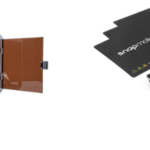LES or Large Eddy Simulations is a fantastic technique to stimulate how different hardware interacts with fluids. It has gained popularity and is quite reliable. It strikes the perfect balance between granularity and computational efficiency, which has led to massive popularity in the automobile and aerospace industry. In this article, you will learn the basic theory behind LES and its use in computational fluid dynamics. You can learn more about the different versions of Navier-Stokes equations and how LES is so beneficial.
LES or Large Eddy Simulations help solve the Navier-Stokes equation and are computationally efficient. Its main benefit is filtering, which helps by chunking our data into computationally feasible blocks. For smaller SGS or Sub-Grid Scale data, you can develop approximate models. You can also directly solve the equations for information in each block.
Register for a CFD Course to learn more about Computational Fluid Dynamics.
Let’s go through the principles of LES in this post.
The problem of turbulence
Turbulence is motion characterized by chaotic changes in flow velocity and pressure. Theoretically, each particle in our fluid has extremely powerful computers, such as atomic computers; you won’t be able to solve complex equations.
So to reduce computational complexity, filtering out specific portions of our data. There are three versions of Navier-Stokes equations with differing levels of computational complexity and granularity. The three versions are
- Direct numerical simulations (DNS)
It doesn’t require any filter. It is only suitable for smaller-scale theoretical simulations.
- Reynolds-Averaged Navier-Stokes (RANS)
This filter values below a threshold by averaging them. It is more computationally efficient than LES but a less precise method.
- Large Eddy Simulations (LES)
You need to filter out and model small-scale’ eddies.’ It is an exact method that is still computationally tractable.
Low-Pass filtering
Low-Pass filtering is a simple explicit filtering method that is used in LES. High-frequency signals are reduced or removed to allow low-frequency signals to pass by unchanged. A threshold delta determines the high and low frequencies.
Filters used on particular parts of our essential data are often displayed as a mesh overlaid onto our data from a visual perspective. There are numerous others. filtering methods. Some filtering methods determine the signal size that should be allowed to pass through. Other filtering methods are used to leverage complex math to lower the amount of small, turbulent processes dynamically. You can also store relevant information about turbulence in a computationally efficient manner by using SGS (Sub-Grid Scale) models. After having a computationally tractable dataset, you can apply calculus-based solvers and perform solutions.
LES or Large Eddy Simulations are tractable simulations of fluid dynamics and computationally intensive. They are popular since they use specific filters to remove or reduce small-scale turbulence, leading to the most computational complexity. From there, it leverages ideally and efficiently parallelized solvers to determine solutions for the Navier-Stokes equations.
LES has become quite popular in the hardware modeling space. Some applications include aerospace engineering, internal combustion engines, marine energy, and wind turbine design. By efficiently using computers, theoretically, we can test hundreds of possible designs before building a physical prototype.
Conclusion
LES is a computationally intensive but tractable simulation of fluid dynamics. Filters are used to remove small-scale turbulence, which causes computational complexity. It solves the Navier-Stokes equations with efficient, parallelised solvers. Does CFD interest you? If so, learn CFD Software Course In Mumbai.












